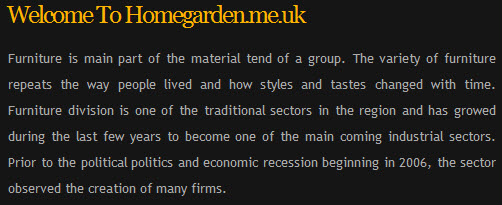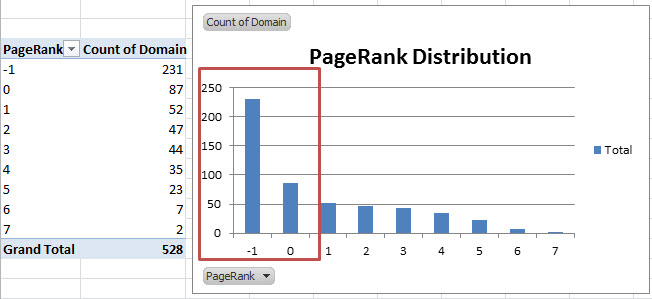Businesses are growing more aware of the need to understand and implement at least the basics of
search engine optimization (SEO).
But if you read a variety of blogs and websites, you’ll quickly see
that there’s a lot of uncertainty over what makes up “the basics.”
Without access to high-level consulting and without a lot of experience
knowing what SEO resources can be trusted, there’s also a lot of
misinformation about SEO strategies and tactics.
1. Commit yourself to the process. SEO isn’t a
one-time event. Search engine algorithms change regularly, so the
tactics that worked last year may not work this year. SEO requires a
long-term outlook and commitment.
2. Be patient. SEO isn’t about instant
gratification. Results often take months to see, and this is especially
true the smaller you are, and the newer you are to doing business
online.
3. Ask a lot of questions when hiring an SEO company.
It’s your job to know what kind of tactics the company uses. Ask for
specifics. Ask if there are any risks involved. Then get online yourself
and do your own research—about the company, about the tactics they
discussed, and so forth.
4. Become a student of SEO. If you’re taking the
do-it-yourself route, you’ll have to become a student of SEO and learn
as much as you can. Luckily for you, there are plenty of great web
resources (like
Search Engine Land) and several terrific books you can read. (Yes, actual printed books!) See our
What Is SEO page for a variety of articles, books and resources.
5. Have web analytics in place at the start. You
should have clearly defined goals for your SEO efforts, and you’ll need
web analytics software in place so you can track what’s working and
what’s not.
6. Build a great web site. I’m sure you want to show up on the first page of results. Ask yourself, “Is my site
really one of the 10 best sites in the world on this topic?” Be honest. If it’s not, make it better.
7. Include a site map page. Spiders can’t index
pages that can’t be crawled. A site map will help spiders find all the
important pages on your site, and help the spider understand your site’s
hierarchy. This is especially helpful if your site has a hard-to-crawl
navigation menu. If your site is large, make several site map pages.
Keep each one to less than 100 links. I tell clients 75 is the max to be
safe.
8. Make SEO-friendly URLs. Use keywords in your URLs and file names, such as
yourdomain.com/red-widgets.html. Don’t overdo it, though. A file with 3+ hyphens tends to look spammy and users may be hesitant to click on it.
Related bonus tip: Use hyphens in URLs and file names, not underscores. Hyphens are treated as a “space,” while underscores are not.
9. Do keyword research at the start of the project. If you’re on a tight budget, use the free versions of
Keyword Discovery or
WordTracker,
both of which also have more powerful paid versions. Ignore the numbers
these tools show; what’s important is the relative volume of one
keyword to another. Another good free tool is Google’s
AdWords Keyword Tool, which doesn’t show exact numbers.
10. Open up a PPC account. Whether it’s Google’s AdWords, Microsoft adCenter or something else, this is a great way to get
actual search volume
for your keywords. Yes, it costs money, but if you have the budget it’s
worth the investment. It’s also the solution if you didn’t like the “Be
patient” suggestion above and are looking for instant visibility.
11. Use a unique and relevant title and meta description on every page.
The page title is the single most important on-page SEO factor. It’s
rare to rank highly for a primary term (2-3 words) without that term
being part of the page title. The meta description tag won’t help you
rank, but it will often appear as the text snippet below your listing,
so it should include the relevant keyword(s) and be written so as to
encourage searchers to click on your listing.
Related bonus tip: You can ignore the Keywords meta tag, as no major search engine today supports it.
12. Write for users first. Google, Yahoo, etc., have
pretty powerful bots crawling the web, but to my knowledge these bots
have never bought anything online, signed up for a newsletter, or picked
up the phone to call about your services. Humans do those things, so
write your page copy with humans in mind. Yes, you need keywords in the
text, but don’t stuff each page like a Thanksgiving turkey. Keep it
readable.
13. Create great, unique content. This is important
for everyone, but it’s a particular challenge for online retailers. If
you’re selling the same widget that 50 other retailers are selling, and
everyone is using the boilerplate descriptions from the manufacturer,
this is a great opportunity. Write your own product descriptions, using
the keyword research you did earlier (see #9 above) to target actual
words searchers use, and make product pages that blow the competition
away. Plus, retailer or not, great content is a great way to get inbound
links.
14. Use your keywords as anchor text when linking internally.
Anchor text helps tells spiders what the linked-to page is about. Links
that say “click here” do nothing for your search engine visibility.
15. Build links intelligently. Begin with foundational links like trusted directories. (
Yahoo and
DMOZ
are often cited as examples, but don’t waste time worrying about DMOZ
submission. Submit it and forget it.) Seek links from authority sites in
your industry. If local search matters to you (more on that coming up),
seek links from trusted sites in your geographic area — the Chamber of
Commerce, local business directories, etc. Analyze the inbound links to
your competitors to find links you can acquire, too. Create great
content on a consistent basis and use social media to build awareness
and links. (A blog is great for this; see below.)
16. Use press releases wisely. Developing a
relationship with media covering your industry or your local region can
be a great source of exposure, including getting links from trusted
media web sites. Distributing releases online can be an effective link
building tactic, and opens the door for exposure in news search sites.
Related bonus tip: Only issue a release when you have something newsworthy to report. Don’t waste journalists’ time.
17. Start a blog and participate with other related blogs.
Search engines, Google especially, love blogs for the fresh content and
highly-structured data. Beyond that, there’s no better way to join the
conversations that are already taking place about your industry and/or
company. Reading and commenting on other blogs can also increase your
exposure and help you acquire new links.
Related bonus tip: Put your blog at
yourdomain.com/blog so your main domain gets the benefit of any links to your blog posts. If that’s not possible, use
blog.yourdomain.com.
18. Use social media marketing wisely. If your business has a visual element, join the appropriate communities on
Flickr and post high-quality photos there. If you’re a service-oriented business, use
Small Business Search Marketing and can be found on Twitter at
@MattMcGee and/or on
Google Plus. See more articles by Matt McGee.
Source:
SearchEngineLand.com











